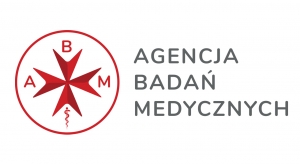DuoNen project - "Application of LutaPol/ItraPol (177Lu/90Y-DOTATATE) tandem therapy as an effective tool in the treatment of neuroendocrine tumours".
Source of funding: Project funded by the Medical Research Agency, Poland, project number 2019/ABM/01/00077
Beneficiary: National Centre for Nuclear Research, POLATOM Radioisotope Centre
Partners: Military Medical Institute, Maria Skłodowska-Curie National Institute of Oncology National Research Institute, Świętokrzyskie Oncology Centre Independent Healthcare Facility in Kielce, SP ZOZ University Hospital in Kraków, Jagiellonian University Collegium Medicum
Implementation period: 2020-2026
Co-financing: PLN 16 225 166.35
Contact: Renata Mikołajczak, PhD, Professor NCBJ (renata.mikolajczak@polatom.pl)
Although neuroendocrine tumours (NENs) are considered rare, a number of studies and epidemiological surveys in recent years have noted a significant increase in the incidence and detection of NENs. Long-acting somatostatin analogues remain at the forefront of treatment for these conditions. For patients with disease progression detected during this treatment (at a stage where they are ineligible for surgery), radioisotope therapy (Peptide Receptor Radinuclide Therapy, PRRT) using somatostatin analogues labelled with 177Lu or 90Y radioisotopes or a mixture of these radioisotopes (tandem-PRRT) is becoming the second-line therapy.
NEN tumours are heterogeneous; moreover, many patients have large tumour lesions and small metastases at the same time, hence the hypothesis that combining the radiation effect of two radionuclides with different radiation energies and different ranges in the tissue, such as 177Lu (max. 2 mm) and 90Y (range 10-12 mm), would be more effective in destroying them. For the first time in the world, such research was initiated in Poland in the first decade of the 21st century and the results were published in 2011. Similar trials have been undertaken by other centres, mainly in Germany and Australia. Randomised trials evaluating the effect of tandem-PRRT on overall survival of patients with NEN and comparing this type of treatment with 177Lu-only therapy (177Lu-DOTATATE) are lacking in the literature. However, published studies, including non-randomised trials and the clinical centres' own experience, suggest an advantage of a mixture of two radioisotopes over mono-radioisotope therapy.
Two radiopharmaceutical precursors, ItraPol (90Y chloride, registration certificate No. 22069 issued 08.09.2014) and LutaPol (177Lu chloride, registration certificate No. 22081 issued 08.09.2014), have been developed and are currently manufactured at the National Centre for Nuclear Research, POLATOM Radioisotope Centre in Świerk. In addition, as a result of the project
MultiSom (POIR/01.02.00-00-00-0041/15), a new medicinal product MultiSom (active substance: DOTATATE) was developed which, labelled with 177Lu or 90Y and a mixture of 177Lu with 90Y, could be used to conduct such a randomised trial.
The National Centre for Nuclear Research, as a scientific entity, is interested in further research aimed at further, more effective use of manufactured radiopharmaceutical precursors, and is therefore acting as sponsor of the proposed non-commercial, randomised clinical trial of DuoNen. In turn, clinicians from clinical centres providing PRRT therapy and experienced in treating NEN patients have expressed interest in conducting such a trial. These centres have expressed their willingness to cooperate in the study in the form of letters of intent.
The aim of this study is to develop an algorithm for the treatment of NEN patients with ItraPol and LutaPol isotopic mixtures (177Lu-DOTATATE and 90Y-DOTATATE).
The specific objective is to evaluate the efficacy of personalised treatment of NEN patients with 177Lu-DOTATATE and 90Y-Lu-DOTATATE mixtures compared to standard treatment of NEN patients with 177Lu-DOTATATE. Approximately 120 adult patients with advanced, unresectable, histopathologically confirmed, well and intermediate differentiated (G1 and G2) neuroendocrine tumours with confirmed high expression of somatostatin receptors will be enrolled in the study.
Patients will be randomised to four groups:
- Group A - treatment with 177Lu-DOTATATE with fixed doses of 200 mCi radioactivity
- Group B - 177Lu-DOTATATE treatment with 90Y- Lu-DOTATATE - initially in a 100:50 mCi/mCi ratio. Based on imaging studies and pharmacokinetics and calculated absorbed doses in the tumour and kidney in subsequent cycles, the ratio of 90Y to fixed 177Lu radioactivity will be individually selected.
- Group C - 177Lu-DOTATATE treatment with 90Y- Lu-DOTATATE - initially in a ratio of 100:50 mCi/mCi. Based on imaging studies and pharmacokinetics and the calculated absorbed doses in the tumour and kidney in subsequent cycles, the ratio of 177Lu to fixed 90Y radioactivity will be individually selected.
- Group D - treatment with 177Lu-DOTATATE initially with a dose of 200 mCi and then with an individualised dose based on imaging studies and pharmacokinetics and calculated absorbed doses in the tumour and kidney.
Evaluation of treatment effects will include imaging studies and biochemical and hormonal tests. Based on the results obtained in each group, the following will be assessed:
- time to disease progression (PFS), overall survival (OS), the percentage of patients who experienced regression, stabilisation, or disease progression,
- safety of the different PRRT modalities.
The expected outcome of the study will be the development of individualised treatment algorithms for NEN patients using PRRT or tandem-PRRT to achieve increased treatment efficacy compared to standard therapy.







